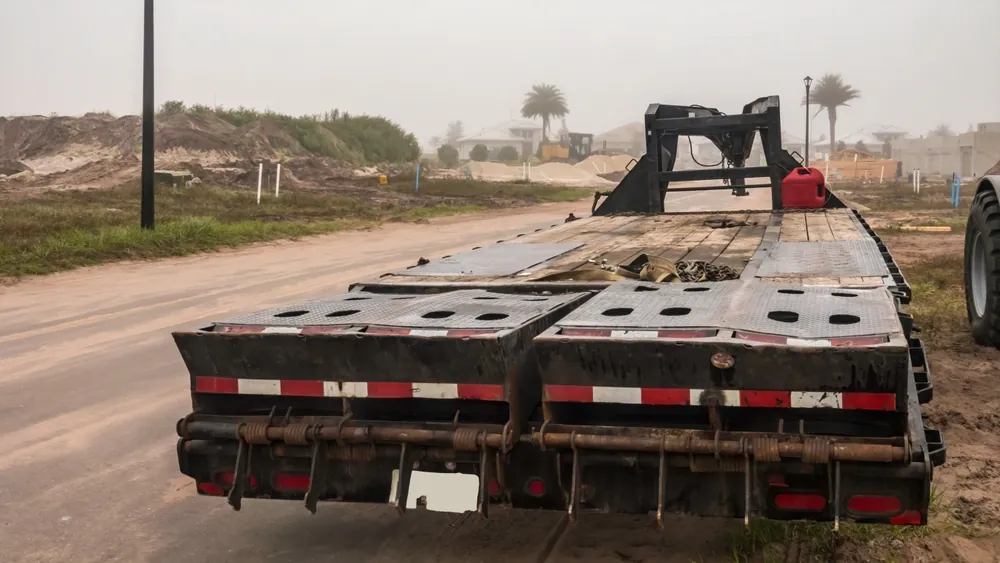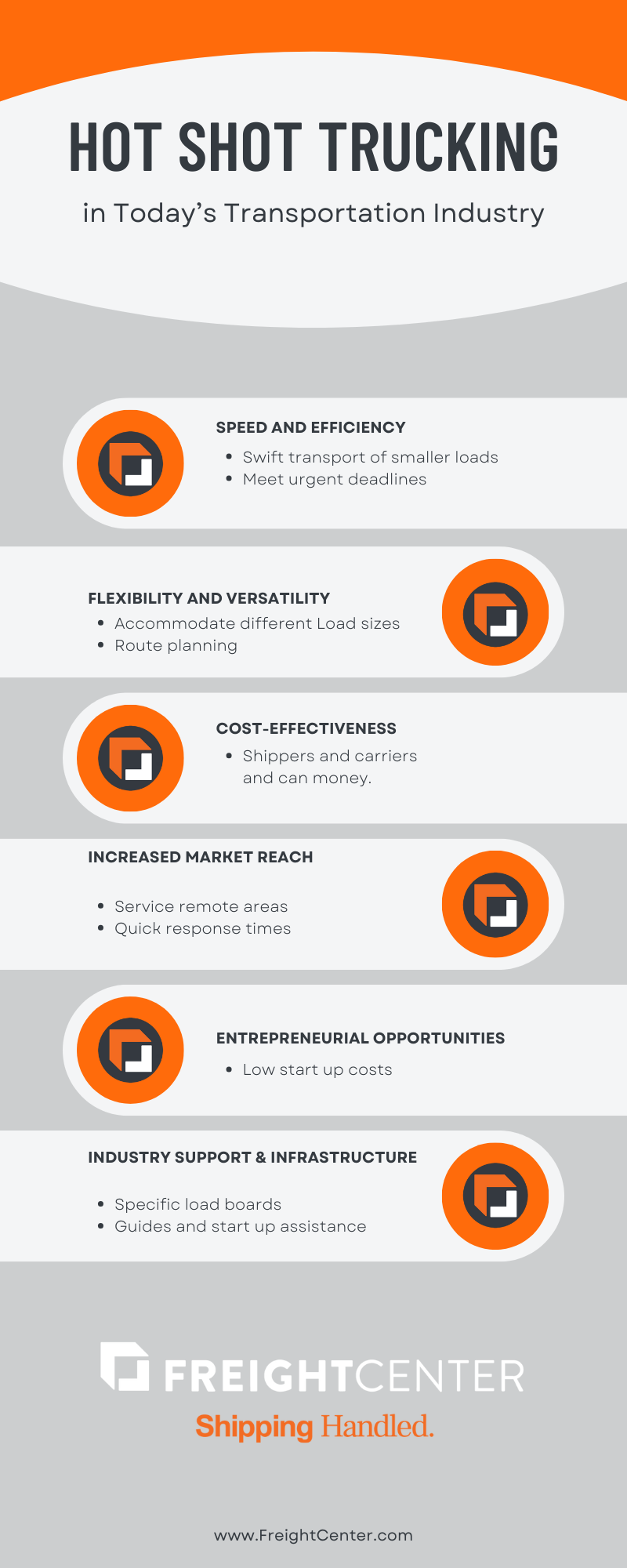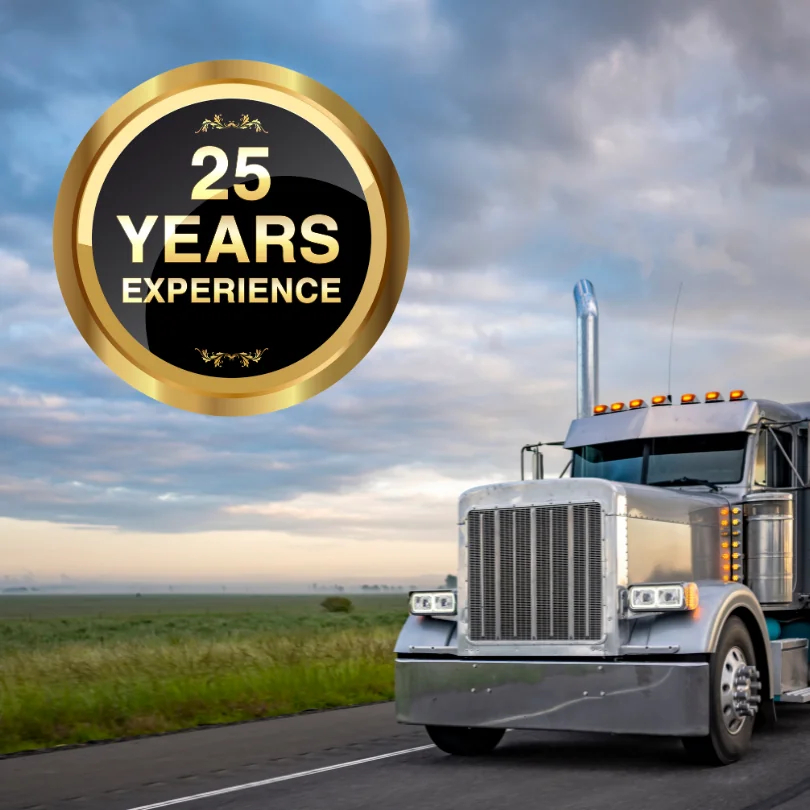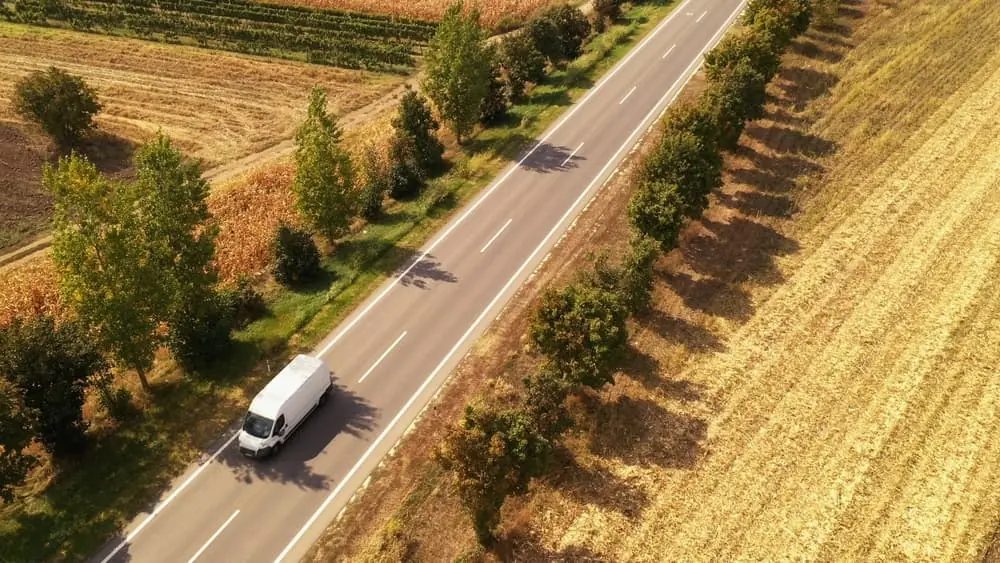
What is Hot Shot Trucking?
Discover the world of Hot Shot Trucking – a specialized service for rapid, efficient delivery of smaller, time-sensitive loads. Learn how it differs from traditional trucking and its advantages for shippers and carriers. Explore the evolution, challenges, and milestones in this dynamic industry. Trust FreightCenter, your reliable hot shot shipping provider, for unmatched rates and exceptional service across the U.S. & Canada. Get a quick and free shipping quote today!
Hot Shot Trucking Defined
Hot shot trucking, also known as hotshot trucking, is a specialized transportation service that involves transporting smaller, time-sensitive loads (less than truckload or LTL) using medium-duty pickup trucks and flatbed hot shot trailers. Unlike traditional semi-truck transportation, which typically involves large loads in massive Class 8 tractor-trailers, hot shot trucking focuses on delivering smaller quantities of freight quickly and efficiently.
Hot shot trucking is frequently utilized for time-sensitive deliveries that require expedited shipping. This may include urgent or rush orders, small-scale shipments, or deliveries that must be made within shorter time frames. Hot shot trucking is often preferred for its flexibility, as it allows companies to transport goods faster than traditional shipping methods.
Hot shot truckers play a critical role in the supply chain by providing fast and reliable transportation services for smaller loads. They leverage their driving experience and expertise to navigate routes and deliver goods promptly and efficiently. Hot shot trucking is particularly beneficial for businesses requiring quick deliveries or limited shipping volume.
Why Choose Our Hot Shot Shipping Services?
- Receive freight shipping quotes for transporting smaller, time-sensitive loads anywhere in the U.S. & Canada.
- Unmatched, heavily discounted rates for hot shot transportation.
- Our automated system monitors your shipment, generating all essential documents and invoices.
- Streamline your quote and shipment management in a single, user-friendly platform.
- Trustworthy expertise.
Award-Winning Service, Trusted by Shippers Everywhere!
- 2021, 2017 & 2016 Food Logistics’ Top Green Providers
- 2021 & 2018 Supply & Demand Chain Executives’ Pros to Know: Matthew Brosious
- 2020 & 2019 Top Food Logistics’ 3PL & Cold Storage Provider Award
- 2020 & 2019 Business Observer’s Top 500 Companies on the Gulf Coast
- 2020 & 2017 SmartWay® Transport Partner
- 2020 & 2017 Food Logistics’ Champions: Rock Stars of the Supply Chain
- 2020 Best of Palm Harbor Awards for Local Businesses
- 2017 Green Supply Chain Award from Supply & Demand Chain Executive
- 2017 Tampa Bay Business Journal Heroes at Work
- 2016, 2015, & 2012 Food Logistics Top 100 Software and Technology Providers
- 2013 Tampa Bay Business 100 by Tampa Bay Business Journal
- 2013 Top 100 Great Supply Chain Partners by SupplyChainBrain
- 2012 TIA Samaritan Award Honorable Mention
- 2012, 2011 & 2010 TBBJ Fast 50 Recipient
- 2013, 2011, & 2010 Diversity Business Top Businesses

Hot Shot Trucking in Today's Transportation Industry
Hot shot trucking has become a significant and relevant contemporary transportation industry. This specialized form of freight transportation provides numerous benefits and fills a crucial niche in the supply chain. The following key points underscore the importance and relevance of hot shot trucking:
Speed and Efficiency: Hot shot trucking offers expedited and time-sensitive delivery services, allowing for the swift transportation of smaller loads using smaller trucks or vans. This enables businesses to meet urgent delivery deadlines and fulfill time-critical orders, crucial in industries such as oil and gas, construction, manufacturing, and healthcare.
Flexibility and Versatility: Hot shot trucking provides flexibility regarding load sizes, route planning, and delivery schedules. It is suitable for transporting a wide range of cargo, including perishable goods, equipment, parts, and urgent supplies. This versatility makes hot shot trucking an attractive option for businesses that require on-demand and customized transportation solutions.
Cost-Effectiveness: Hot shot trucking can be a cost-effective alternative to full truckload (FTL) or less-than-truckload (LTL) shipping, especially for smaller loads. By utilizing smaller vehicles, businesses can avoid the costs of operating larger trucks and trailers. Additionally, it eliminates the need for warehousing or storage facilities, reducing inventory holding costs.
Increased Market Reach: Hot shot trucking enables businesses to expand their market reach and serve customers in remote or difficult-to-access locations. It allows for quick response times and on-time deliveries, regardless of the destination.
Entrepreneurial Opportunities: Hot Shot Trucking provides entrepreneurial opportunities for owner-operators and small trucking businesses. It allows individuals to start trucking companies with relatively low startup costs compared to traditional long-haul trucking operations. This can be attractive for individuals looking to enter the transportation industry and have more control over their business.
Industry Support and Infrastructure: Hot Shot Trucking has gained support from various industry platforms and service providers. Some freight load boards cater specifically to hot shot loads, connecting shippers and carriers efficiently. Additionally, resources are available, such as guides and startup assistance, to help individuals establish and grow their hot shot trucking businesses.
In conclusion, hot shot trucking plays a vital role in today’s transportation industry by offering speed, flexibility, cost-effectiveness, increased market reach, entrepreneurial opportunities, and industry support. Its importance and relevance are evident in sectors where time-critical deliveries, customized solutions, and efficient logistics are paramount.

Why Choose FreightCenter for Hot Shot Trucking?
There are many reasons to choose FreightCenter for your Hot Shot shipping needs.
Here are just a few:
- Specialized Equipment: Our company has access to specialized trailers and carriers capable of safely and efficiently handling your shipments.
- Expertise: Our team of transportation experts possess the knowledge and experience required to manage the intricate logistics involved in shipping, including obtaining permits, coordinating with local authorities, and ensuring the secure transportation of your cargo.
- Technology: Our organization utilizes cutting-edge technology to facilitate automated tracking, real-time status updates, and simplified paperwork and invoicing processes, thereby enabling seamless management of your shipments.
- Competitive Rates: Our company’s relationships with carriers and industry-leading negotiating power enable us to offer unbeatable shipping rates.
- Customer Service: We take great pride in delivering exceptional customer service, with committed representatives accessible round the clock to address your queries and guarantee a smooth shipping experience.
In short, when you choose FreightCenter for your shipping needs, you can trust that your cargo will be in good hands and that you’ll receive the best possible service at a competitive rate.
Size and Type of Vehicles Used
Hot shot trucking typically involves smaller vehicles, such as pickup trucks or medium-duty trucks. These vehicles are often equipped with a gooseneck or fifth-wheel hitch, allowing them to tow trailers. The size and type of vehicles used in hot shot trucking can vary depending on the specific needs of the job and the type of cargo being transported.
Here are some common types of vehicles used for hot shot trucking:
- Pickup Trucks: Hot shot trucking often begins with pickup trucks, which are versatile and readily available. These trucks can haul trailers, flatbeds, or gooseneck trailers to transport smaller loads quickly.
- Flatbed Trucks: Flatbeds are commonly used for hot shot trucking, offering an open and versatile cargo space. They come in various sizes, typically 20 to 40 feet long, and can accommodate many cargo types.
- Gooseneck Trailers: Gooseneck trailers are often attached to pickup trucks for hot shot trucking. They provide stability and can carry heavier loads compared to conventional hitch trailers.
- Box Trucks: Some hot shot carriers use box trucks or straight trucks, especially for loads that require protection from the elements or security. These trucks vary in size but are generally smaller than tractor-trailers.
- Cabin Type and Size: The cabin of hot shot trucks can vary, with some equipped with sleeper berths for longer hauls and overnight stays. However, many hot shot truckers opt for crew or extended cabs to accommodate additional passengers or equipment.
- Heavy-Duty Pickup Trucks: Heavy-duty pickup trucks like the Ford F-450 and F-550 are commonly used for hot shot trucking due to their towing capacity and payload capabilities.
- Specialized Equipment: Depending on the cargo, hot shot trucking may involve specialized equipment such as temperature-controlled trailers for perishable goods or trailers with ramps for easy loading and unloading.
- Vehicles with Dually Wheels: Many hot shot trucks have dual wheels (dual rear wheels) for added stability and increased weight-carrying capacity.
Milestones and Advancements in the Industry
The hot shot trucking industry has seen several notable milestones and advancements that have contributed to its growth and development:
Advancements in GPS Technology: The introduction and widespread adoption of Global Positioning System (GPS) technology have greatly enhanced the efficiency and safety of hot shot trucking. GPS enables real-time tracking and navigation, allowing drivers to optimize routes, reduce fuel consumption, and improve delivery accuracy.
Integration of Electronic Logging Devices (ELDs): Implementing ELDs has brought greater accountability and compliance to the hot shot trucking industry. ELDs automate hours-of-service tracking, ensuring drivers adhere to legal driving limits and rest requirements. This advancement has improved safety on the roads and increased overall efficiency.
Increased Use of Telematics and Fleet Management Systems: Telematics and fleet management systems have become integral tools for hot shot trucking companies. These technologies provide real-time data on vehicle performance, driver behavior, and fuel consumption, allowing companies to optimize operations, reduce costs, and improve overall fleet efficiency.
Expansion of Service Offerings: Hot shot trucking companies have diversified their service offerings to cater to a broader range of industries and customer needs. They now provide specialized services such as temperature-controlled transportation, hazardous materials handling, and oversized load transportation.
Integration of Automation and Artificial Intelligence: The hot shot trucking industry is exploring the potential of automation and artificial intelligence to enhance further efficiency and safety. Technologies such as autonomous vehicles and predictive analytics can revolutionize the industry by reducing human error and optimizing fleet management.
These notable milestones and advancements have contributed to the growth and development of the hot shot trucking industry, making it a vital component of the modern transportation landscape.
The range of cargo that can be transported by hot shot trucking can be pretty diverse. It can include:
Hot shot trucking is ideal for small and time-sensitive shipments that don't require a full truckload. This includes automotive parts, machinery components, and construction materials.
The oil and gas industry frequently relies on hot shot trucking to transport equipment, tools, and parts to remote drilling sites.
Farmers and agricultural businesses use hot shot services to transport seeds, fertilizers, and other agricultural supplies to keep operations running smoothly.
Hot shot trucking is often used to transport construction materials such as lumber, steel, concrete, and building supplies to construction sites.
Some hot shot carriers transport heavy machinery and equipment, including excavators, bulldozers, and industrial machinery.
Livestock transportation, especially for smaller numbers of animals, can be handled by hot shot trucking. This may include horses, cattle, and other livestock.
Hot shot trucking is well-suited for emergency freight, such as delivering critical medical supplies, disaster relief supplies, or replacement parts during equipment breakdowns.
Any cargo that requires expedited delivery due to time-sensitive or just-in-time manufacturing needs can be transported via hot shot services.
Hot shot carriers may also handle specialized cargo, including temperature-sensitive goods (refrigerated hot shot trucks), hazardous materials, or oversized loads with proper permits and equipment.
Hot shot trucking is increasingly used in the retail and e-commerce industries to quickly deliver small shipments of consumer goods, electronics, or products ordered online.
Hot shot services can transport event materials, exhibits, and trade show booths to event venues, ensuring timely setup.
Delicate items that need careful handling and protection during transit, such as artwork or sculptures.
Advantages of Hot Shot Trucking For Both Shippers and Carriers
Hot shot trucking offers several advantages for shippers and carriers, making it a flexible and efficient transportation solution. Here are the benefits for each party:
Advantages for Shippers:
- Speed: Hot Shot Trucking is known for its quick delivery times. Shippers can get their cargo to its destination faster, which is crucial for time-sensitive or urgent shipments.
- Cost-Effective: For smaller loads that don’t require an entire truck, hot shot trucking can be more cost-effective than booking an entire truck for the same cargo.
- Flexibility: Shippers can utilize these services as needed, responding to fluctuating demand without committing to long-term contracts.
- Reduced Inventory Holding Costs: Faster delivery times mean shippers can maintain lower inventory levels, reducing storage costs and the risk of overstock or stockouts.
- Customized Solutions: Carriers can tailor their services to meet the unique needs of shippers, whether it’s handling specialized cargo or accommodating specific delivery requirements.
- Reliability: Carriers often offer personalized and attentive service, ensuring that shipments are handled carefully and delivered on time.
Advantages for Carriers:
- Faster Turnaround: Carriers can quickly complete trips and return for another load, leading to higher earning potential and improved revenue turnover.
- Variety of Cargo: Carriers often transport a diverse range of cargo, keeping the job exciting and allowing for specialization in specific cargo types.
- Lower Equipment Costs: Smaller vehicles like pickup trucks and flatbeds are typically less expensive to acquire and maintain than full-size tractor-trailers.
- Flexibility: Carriers can choose the types of shipments they want to handle and when and where they want to operate.
- Niche Opportunities: Trucking companies can tap into niche markets and industries, such as oil and gas, agriculture, and construction, where specialized transport is in high demand.
- Competitive Rates: Due to their services’ specialized and expedited nature, carriers can often command higher rates for their shipments.
- Quick Payment: Carriers may receive faster payment for their services than larger carriers, helping with cash flow.
- Lower Operating Costs: Smaller vehicles typically have lower fuel and maintenance costs, making it easier for carriers to maintain profitability.
In summary, this mode of transportation benefits shippers and carriers by offering speed, flexibility, cost-effectiveness, and specialized solutions. It’s an efficient way to transport smaller loads quickly while providing carriers with opportunities for profitable niche services.
Unique Challenges Faced by Hot Shot Trucking Operations
Hot shot trucking operations face several unique challenges due to their nature of transporting smaller, time-sensitive loads with specialized equipment. These challenges include:
- High Competition: The trucking industry is highly competitive, with numerous carriers vying for the same customers and loads. This can make it challenging for new entrants to establish themselves and for existing carriers to maintain profitability.
- Variable Demand: Demand for hot shot services can be unpredictable, leading to inconsistent workloads. Carriers must adapt to fluctuating demand, which may require diversifying their services or finding new markets.
- Time Sensitivity: Hot Shot Trucking is known for its quick turnaround times. Carriers must meet strict delivery deadlines, which can be stressful and may require long hours of driving.
- Equipment Costs: Specialized equipment, such as flatbeds or gooseneck trailers, can be expensive to purchase and maintain. Carriers must invest in the right equipment for their niche, which can strain finances.
- Regulatory Compliance: Hot shot carriers must adhere to federal and state regulations, including hours-of-service rules and safety standards. Compliance is essential to avoid fines and maintain safety on the road.
- Driver Shortage: Like the broader trucking industry, Hot Shot Trucking faces a shortage of qualified drivers. Finding and retaining skilled drivers can be a significant challenge.
- Fuel Costs: Fluctuations in fuel prices can impact the profitability of hot shot operations, especially given the long distances and quick delivery times often required.
- Insurance Costs: Insurance premiums for hot shot trucking can be higher due to the specialized and expedited nature of the services. Carriers must budget for insurance costs accordingly.
- Load Matching: Finding and securing suitable loads can be a constant challenge, as carriers must navigate load boards, negotiate rates, and manage paperwork for each shipment.
- Customer Relations: Maintaining strong customer relationships is vital in the hot shot industry. Carriers must consistently meet customer expectations for prompt deliveries and high-quality service.
- Safety Concerns: Smaller vehicles and expedited deliveries can sometimes lead to riskier driving conditions. Carriers must prioritize safety while meeting tight deadlines.
- Weather Conditions: Weather can be a significant factor, especially for carriers transporting specialized cargo that may be sensitive to environmental conditions. Adverse weather can disrupt schedules and pose additional risks.
- Permitting and Regulations: Transporting oversized or heavy loads may require special permits and compliance with specific regulations, which can vary by state. Navigating these requirements can be complex and time-consuming.
Despite these challenges, hot shot trucking offers opportunities for carriers to provide specialized, high-value services. Success in this industry often involves careful planning, effective marketing, adaptability, and a solid commitment to meeting customer needs.
Strategies and Solutions to Overcome These Challenges
To overcome the unique challenges faced by hot shot trucking operations, carriers can implement various strategies and solutions:
- Diversify Services: Expanding the range of services offered, such as specialized cargo handling or expedited delivery options, can help attract a broader clientele and mitigate the impact of variable demand.
- Efficient Routing: Implement route optimization software to minimize empty miles and reduce fuel consumption. This ensures more efficient use of resources and reduces operating costs.
- Customer Relationship Management: Maintain strong customer relationships through excellent communication and reliable service. Happy customers are more likely to provide repeat business and referrals.
- Technology Adoption: Invest in technology solutions like GPS tracking, electronic logging devices (ELDs), and load matching apps to improve efficiency, stay compliant with regulations, and enhance visibility.
- Driver Recruitment and Retention: Develop competitive compensation packages, offer driver training and incentives, and create a positive working environment to attract and retain skilled drivers.
- Fuel Efficiency Measures: Adopt fuel-efficient driving practices and invest in fuel-efficient vehicles. Monitor fuel consumption and consider alternative fuel options where feasible.
- Load Board Utilization: Leverage load boards and freight broker partnerships to find and secure suitable loads. Building relationships with brokers can lead to a more consistent flow of business.
- Equipment Maintenance: Implement a regular maintenance schedule to keep specialized equipment in optimal condition, reducing downtime and costly repairs.
- Cost Management: Carefully manage operating costs by regularly reviewing expenses and finding opportunities to reduce waste and inefficiencies.
- Safety Training: Prioritize driver safety through ongoing training and monitoring. Create a safety culture within the company to reduce accidents and insurance premiums.
- Compliance Monitoring: Stay informed about federal and state regulations and ensure strict compliance. Invest in systems and procedures to monitor hours of service, vehicle inspections, and other regulatory requirements.
- Strategic Marketing: Develop a strong online presence and marketing strategy to attract potential customers and establish a reputation for reliability and quality service.
- Insurance Options: Explore insurance options and work with brokers to find coverage that balances cost and protection for your unique operations.
- Weather Contingencies: Develop contingency plans for adverse weather conditions. This may include flexible scheduling, rerouting, or temporary storage solutions.
- Financial Planning: Maintain a solid financial plan that accounts for variable demand, equipment maintenance, and unexpected expenses. Consider building a financial cushion for leaner times.
- Network Building: Build and maintain relationships with industry peers, associations, and organizations to stay informed about industry trends, regulations, and opportunities for collaboration.
- Permitting Expertise: Hire or consult with professionals who specialize in navigating permit requirements and regulations for transporting oversized or heavy loads.
By implementing these strategies and solutions, your operations can enhance their competitiveness, adapt to changing market conditions, and provide high-quality customer service while effectively managing challenges.
History of Hot Shot Trucking
The practice originated in the United States and has become vital to the transportation industry.
Origins: The beginnings of Hot Shot Trucking can be traced back to the early 20th century when independent truckers started using smaller vehicles to provide fast and efficient transportation services. These drivers mainly handled time-sensitive deliveries that did not require a full-size truck, offering faster and more flexible transportation options, especially for smaller loads that needed to be delivered quickly within strict timeframes.
Early Development: In its early stages, hot shot trucking focused mainly on meeting the complex and time-sensitive needs of the oil and gas industry. Independent truckers provided expedited transportation services for equipment, parts, and materials to remote locations, drilling sites, and oilfields. This facilitated the optimization of operations and minimized downtime for the industry.
As the demand for expedited freight services grew, hot shot trucking expanded beyond the oil and gas sector. Other industries, such as construction, manufacturing, and agriculture, began utilizing these services to meet their time-critical transportation needs. Hot shot trucking companies emerged to meet the increasing demand for these specialized services. These companies typically operate with smaller trucks and trailers, providing a more cost-effective and flexible solution for time-sensitive deliveries compared to traditional freight carriers.
Evolution of Growth of Hot Shot Trucking
Over the years, hot shot trucking has experienced significant evolution and growth, driven by technological advancements, consumer demand changes, and logistics and transportation infrastructure improvements.
Advancements in Technology: Digital platforms and the internet have revolutionized the hot shot trucking industry. Online load boards and freight marketplaces connect shippers and carriers, making finding and booking loads easier. This has streamlined the process of matching available trucks with time-sensitive shipments, optimizing efficiency and reducing downtime.
Changing Consumer Demands: The rise of e-commerce and the demand for fast and reliable deliveries have further fueled the growth of hot shot trucking. Consumers now expect shorter delivery times, and hot shot trucking provides a solution for time-sensitive shipments that cannot wait for traditional shipping methods. This has increased the number of hot shot trucking companies and drivers in the market.
Improvements in Logistics and Transportation Infrastructure: Infrastructure improvements, such as the development of highways and interstates, have played a significant role in the growth of hot shot trucking. These improvements have made it easier for hot shot trucking companies to transport goods quickly and efficiently across long distances.


FreightCenter Your Trusted Hot Shot Trucking Provider
In conclusion, hot shot trucking is a vital and relevant part of today’s transportation industry, offering numerous advantages to both shippers and carriers. This specialized service focuses on the expedited transportation of smaller, time-sensitive loads, providing unmatched speed, flexibility, cost-effectiveness, and specialized solutions. This type of trucking has evolved over the years, driven by technology advancements, changing consumer demands, and improvements in logistics infrastructure.
FreightCenter stands out as a reliable and efficient choice when considering hot shot trucking services. Our commitment to speed, reliability, and cost-effectiveness ensures that your time-sensitive shipments reach their destination promptly and securely. With a diverse fleet of vehicles, specialized handling options, and a customer-centric approach. Call us today at 800-716-7608 or run a fast and free online shipping quote.
FAQ – Hot Shot Trucking
Q. What’s the best truck for Hotshot?
A. Regarding hotshot trucking, the best truck for you will depend on your unique needs. There are plenty of popular options. Heavy-duty pickup trucks such as the Ford F-450 or F-550 are a great choice, boasting impressive towing and payload capabilities. Of course, it’s crucial to carefully consider your cargo type and hauling requirements before making your final decision.
Q. Are hot shot truckers in demand?
A. Hotshot truckers are in demand due to their ability to provide quick and efficient transportation for time-sensitive loads. Their demand in the industry can vary by region and economic conditions.
Q. Is hotshot trucking worth it in 2023?
A. The worthiness of hotshot trucking in 2023 depends on various factors, including your business plan, the demand for your services, and your ability to manage the industry’s unique challenges. Consider factors such as competition, equipment costs, and the types of loads you plan to haul. Conduct a thorough business analysis to determine if Hotshot Trucking aligns with your goals and resources.
Q. What size trailer is best for non-CDL Hotshot?
A. The trailer size can vary for non-CDL hotshot trucking, but it’s essential to stay within your local regulations’ weight and length limits. Standard trailer sizes for non-CDL hotshot operations include 20 to 40-foot flatbed or gooseneck trailers. The best size depends on the type of cargo you plan to transport and the regulations in your area, but it is typically between 30 and 40 feet.
Q. What is the heaviest you can haul without a CDL?
A. The weight you can haul without a Commercial Driver’s License (CDL) varies by state and country. In the United States, for instance, you can typically operate a non-CDL vehicle with a Gross Vehicle Weight Rating (GVWR) of under 26,001 pounds. However, these regulations can change, so you must check with your local Department of Transportation (DOT) for the most up-to-date weight limits.
Q. What is the most common Hotshot trailer?
A. The most common hotshot trailers are typically flatbed trailers. These trailers offer versatility and can accommodate a wide range of cargo types. Additionally, gooseneck trailers are often used in hotshot trucking for their stability and ability to carry heavier loads compared to conventional hitch trailers.
Q. How wide is a 40ft Hotshot trailer?
A. A standard 40-foot hotshot trailer typically has a width of 8.5 feet, which is the standard width for most trailers used in trucking. This width allows for safe and legal cargo transport while complying with road regulations.
Q. What is hot shot trucking?
A. Hot shot trucking, also known as hotshot trucking, is a specialized transportation service that involves transporting smaller, time-sensitive loads (less than truckload or LTL) using medium-duty pickup trucks and flatbed hot shot trailers.



